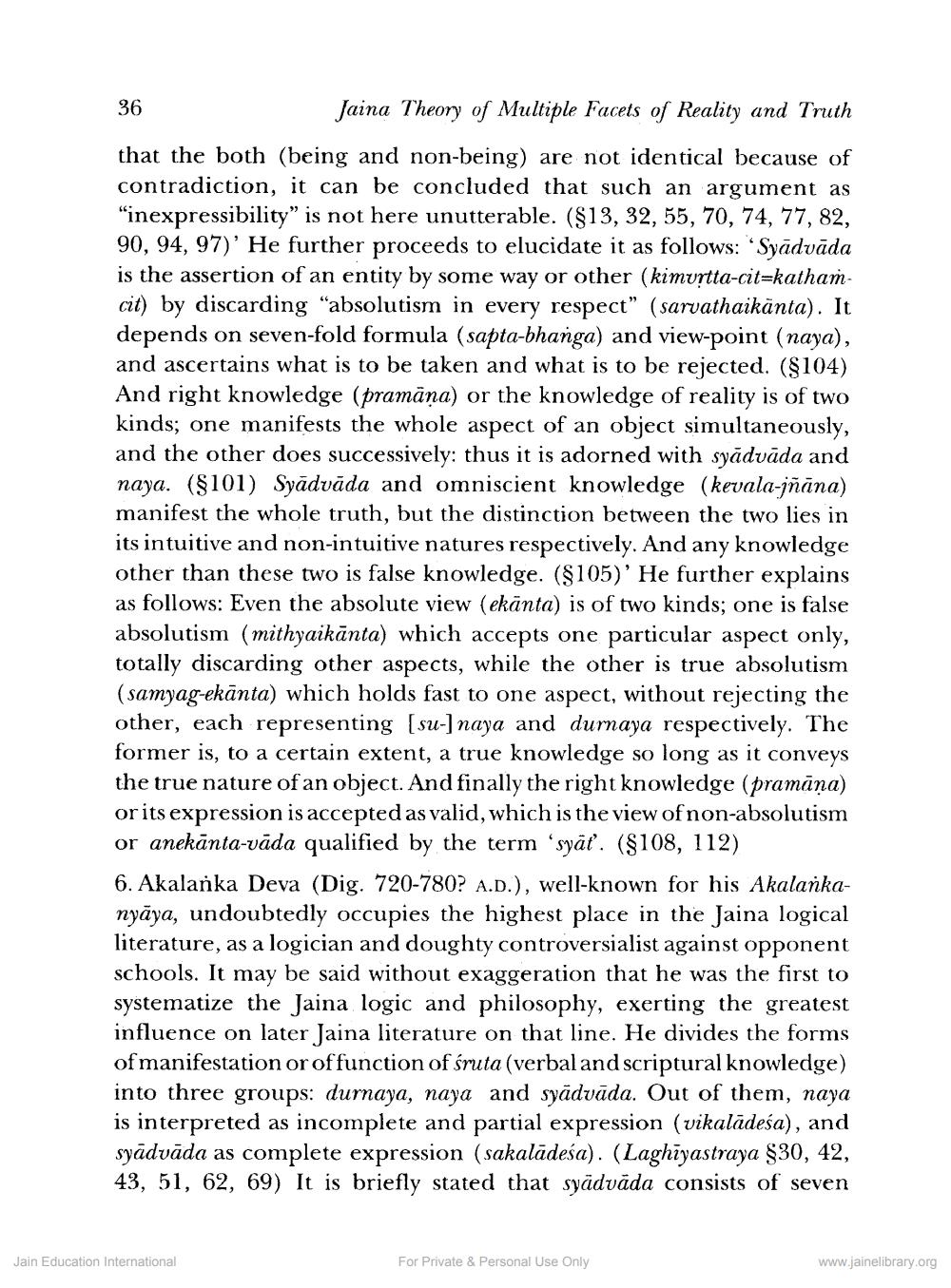________________
36
Jaina Theory of Multiple Facets of Reality and Truth
that the both (being and non-being) are not identical because of contradiction, it can be concluded that such an argument as "inexpressibility” is not here unutterable. (813, 32, 55, 70, 74, 77, 82, 90, 94, 97)' He further proceeds to elucidate it as follows: Syādvāda is the assertion of an entity by some way or other (kimurtta-cit=kathamcit) by discarding "absolutism in every respect" (sarvathaikānta). It depends on seven-fold formula (sapta-bhanga) and view-point (naya), and ascertains what is to be taken and what is to be rejected. (9104) And right knowledge (pramāna) or the knowledge of reality is of two kinds; one manifests the whole aspect of an object simultaneously, and the other does successively: thus it is adorned with syādvāda and naya. (8101) Syādvāda and omniscient knowledge (kevala-jñāna) manifest the whole truth, but the distinction between the two lies in its intuitive and non-intuitive natures respectively. And any knowledge other than these two is false knowledge. ($105)' He further explains as follows: Even the absolute view (ekānta) is of two kinds; one is false absolutism (mithyaikānta) which accepts one particular aspect only, totally discarding other aspects, while the other is true absolutism (samyag-ekānta) which holds fast to one aspect, without rejecting the other, each representing (su-] naya and durnaya respectively. The former is, to a certain extent, a true knowledge so long as it conveys the true nature of an object. And finally the right knowledge (pramāņa) or its expression is accepted as valid, which is the view of non-absolutism or anekānta-vāda qualified by the term 'syāt'. (8108, 112) 6. Akalanka Deva (Dig. 720-780? A.D.), well-known for his Akalankanyāya, undoubtedly occupies the highest place in the Jaina logical literature, as a logician and doughty controversialist against opponent schools. It may be said without exaggeration that he was the first to systematize the Jaina logic and philosophy, exerting the greatest influence on later Jaina literature on that line. He divides the forms of manifestation or of function of śruta (verbal and scriptural knowledge) into three groups: duraya, naya and syādvāda. Out of them, naya is interpreted as incomplete and partial expression (vikalādeśa), and syādvāda as complete expression (sakalādeśa). (Laghīyastraya $30, 42, 43, 51, 62, 69) It is briefly stated that syādváda consists of seven
Jain Education International
For Private & Personal Use Only
www.jainelibrary.org




